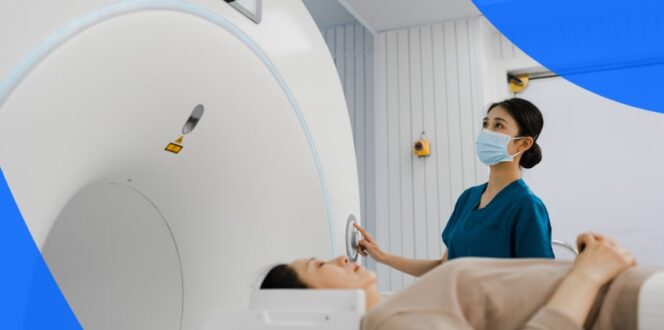The Important Role Patient Advocacy Plays in Your Healthcare

Patient advocacy is the act of providing support to patients and their families so they can better navigate the healthcare system and champion their health needs.
Receiving a medical diagnosis causes both patients and their families a profound mix of emotions. It can also be an isolating experience, where you’re left with many questions but few answers.
Under such circumstances, the importance of patient advocacy becomes even more clear. Having a patient advocate can help you in many ways, from reducing delays in treatment to staying fully informed of your treatment plan and keeping you from being overwhelmed with information. This article will cover:
- What patient advocacy means
- The types of patient advocacy groups
- The many ways advocacy supports patients
- How to advocate for your own care
What is patient advocacy?
Patient advocacy isn’t one action or activity: it’s all the actions and activities that support patients and their families as they encounter the healthcare system. Patient advocacy protects patients’ interests, supports their needs and provides them with the information they need to make the most informed choices for their health.
Anyone can practice patient advocacy:
- You: As a patient, you can be your own advocate. As the person most concerned with both the process and results, you have a right to understand and champion your own health and treatment. However, depending on your condition or diagnosis, you might need some extra assistance.
- Another individual: You might designate a family member to be your advocate when you are unable to do so. A caregiver, social worker or paid support person might also fill that role for you.
- A group: Many patient advocacy organizations have been created to support patients diagnosed with different conditions (and their families), to campaign for their health and to help them as they navigate the complex healthcare system.
What are the types of patient advocacy groups?
Patient advocacy groups can operate nationally, regionally or locally. Some groups exist to help individuals, others are dedicated to specific cancers or rare diseases, to better spotlight the particular needs of each. Patient advocacy organizations might offer practical support, provide education, fund research, campaign for public policy changes or any combination of those activities.
- Not-for-profit groups: These organizations offer services and support like educational materials, help with case management, aid with navigating insurance, improving patient care and more.
- Associations and foundations: Often linked to specific diseases or conditions, patient advocacy associations and foundations provide education, organize support groups and fund research and lobbying efforts.
- For-profit groups: For-profit patient advocate groups provide patient services for a fee according to a person’s situational needs. These might include visits at home or during hospital stays, accompaniment to medical appointments, creating a complete health record and more.
How patient advocacy supports patients
The overall goal of patient advocacy is to make every patient’s healthcare journey easier. Thus, patient advocacy efforts have to happen on many simultaneous levels:
- Provide direct support to patients. Patients often have practical needs, like assistance getting to or from appointments, help obtaining or organizing medications or aid with housekeeping tasks. Equally importantly, patients often appreciate home visits or participating in support groups.
- Raise awareness. Education and outreach is another important aspect of patient advocacy. People working on this facet boost community and public awareness about specific illnesses and how they impact patients’ needs.
- Advance research. The medical sector is constantly finding new treatments for illness, but research is expensive and time-consuming. This arm of advocacy promotes and funds research, whether with direct donations or organizing other fundraising efforts.
- Improve the quality of care. Patient advocates can help boost patient care at the individual level, assisting with daily tasks. They can also help by coordinating larger organizational efforts, providing feedback, participating in research and promoting community outreach.
- Address legislative and regulatory issues. Sometimes the traditional procedures and regulations of the healthcare system can interfere with research and ultimately, patient care. It can take concentrated patient advocacy to change outdated regulations for the better or to enact new, more helpful legislation.
Questions to ask when considering hiring a patient advocate
When looking for patient advocacy outside your immediate circle, you’ll want to ensure you’re dealing with trustworthy people and groups. If you are interested in hiring an individual patient advocate, here are some starter questions to ask:
- Do you have experience advocating for a patient’s rights and health in a medical setting? Can you give an example?
- What is your understanding of privacy regulations when it comes to health information? Canadian patient advocates should know the basics of the Privacy Act, enacted in Ontario by the Personal Health Information Protection Act (PHIPA). In the U.S., they should understand the role of the Health Insurance Portability and Accountability Act (HIPAA).
- Do you have experience advocating for a patient’s rights and health in a medical setting? Describe a specific instance.
- Can you help me file my health insurance claims? Do you have experience navigating health insurance systems and processes?
- How do you explain complex medical information to a patient? To the patient’s family?
- What strategies do you use when a patient feels their medical needs are not being met?
Questions to ask if joining a patient advocacy group
If you want to participate in a patient advocacy group or foundation, consider asking the following:
- What is the group’s core mission?
- What are the primary objectives?
- Do you provide practical help and services?
- How do I fit in? What are the different ways to participate?
- Are there any associated costs?
6 ways to advocate for your care
While other individuals or groups can be very helpful, you are always your most important patient advocate. When it comes to your health, you have the right to understand your diagnosis and control your healthcare journey. There are many steps you can take to advocate for your health, such as:
- Take ownership of your medical imaging records. PocketHealth provides you with secure access to your medical images and reports. You can see and share your images with medical professionals, so you’ll always know where you stand. Access your records today.
- Educate yourself. Take some time to learn about the ins and outs of your diagnosis. Ask your doctor for primary sources, like medical journals or the sites of trusted medical foundations.
- Join a support group. People who are going through similar experiences can provide you with emotional support and valuable information.
- Bring a support person. Having someone with you at appointments can provide both personal comfort and practical support. They can take notes when you ask questions.
- Be prepared. Arrive at your appointments with an agenda, know your health history, bring a list of all your medications and your treatments to date and prepare questions in advance.
- Make sure the next steps are clear. Don’t be afraid to ask for clarification. It’s your health, you have a right to understand exactly what’s happening.
“Anyone living with a complex or chronic disease already lives in a state that is outside of their control. Having access to my medical information puts some control back in my hands.”
– Rare-disease patient and PocketHealth user
Take control of your health
Patient advocates can help you on your healthcare journey. When it comes to understanding your diagnosis and establishing a treatment plan, a patient advocate can help you navigate the complex healthcare system, protect your rights, provide education and information and even assist you with some practical requirements.
But the most important advocate for your health is you. No one understands your needs better than you do. PocketHealth gives you secure access to your imaging records in one place, so you can easily manage, navigate, and share your images as needed. Our Report Reader provides definitions for complex medical terms in your image reports, so you can keep fully informed and advocate for yourself.
The more you understand about your health and circumstances, the better you can take control of your healthcare journey.
Published: January 19, 2024
Trusted by more than 800+ hospitals and clinics.



















